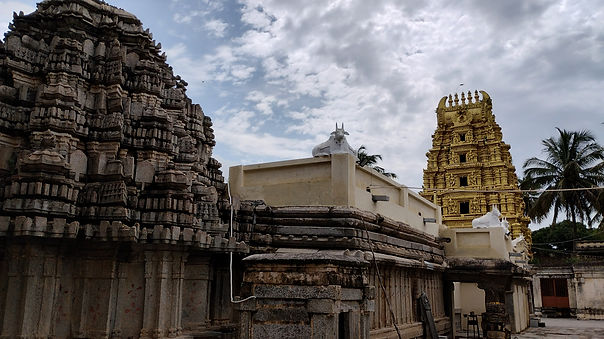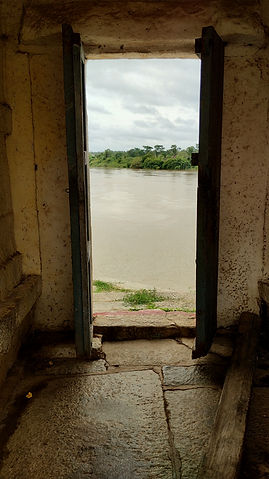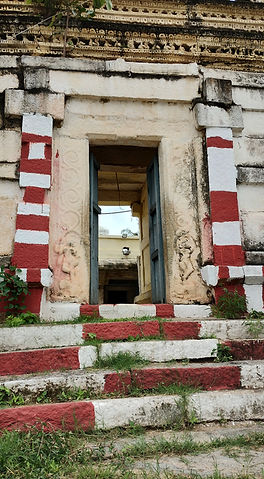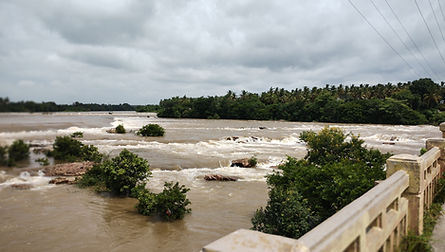
Ramanathapura
A weekday escape to lesser-known Karnataka—where the temples whisper and the crowds stay away

Weary of seeing too many tourists thronging places contending to get the best of the scene and themselves, I was on the lookout for a place that is not yet on the tourist circuit, at least not on a weekday. One such place I stumbled upon on the map is Ramanathapura, in Hassan district. Roughly 24 kilometres from Saligrama in the Mysore district, the region is home to a cluster of temples scattered across the surrounding area. Just a few hundred metres before entering Ramanathapura, the Rameshwara Temple rises along the banks of the Kaveri River, its form etched in timeless Hoysala architecture. This now belongs to ASI. Unlike the usual ASI temples, this one lacks even the basic maintenance. A relic from the Hoysala era, this ancient temple is dedicated to Eashwar and is believed to have been consecrated by Rama himself, earning it the name Rameshwara Temple.
Taking my regular Sagarakatte - Mirle route to reach Saligrama, I was welcomed by the green fields and a few brightly coloured village temples, a stark contrast to the deep grey rain-bearing clouds. The road through Sagarakatte is flanked by the KRS backwater on either side of the road. What sets this place apart is the railway line that slices straight through the heart of the water body—a sight so surreal it feels plucked from a dream. Strangely enough, despite passing by countless times, I’ve never once caught a train crossing that enigmatic stretch of track. I was spellbound watching the locomotive chug through the water as if in a dreamscape. The sky was cloudy and grey, the wind chill, and the colourful train passing through sent tingling sensations along my arms.
After Saligram, follow the road towards Somwarpete (around 50 odd kilometres) and crossing Keralapura, you will reach Ramanathapura. For the longest time, I’d been curious about the so-called “military hotels” scattered across Karnataka—those humble, no-frills eateries famous for their hearty meat dishes, like the one named Keralapurada Military Hotel. It wasn’t until this ride that I came across the namesake behind the restaurant. Tucked away in a quiet corner of the countryside was the town of Keralapura. The river Kaveri, on whose bank the temple is built, was flowing with full vigour, thanks to the heavy rain in the Kodagu region.



Perched on those quiet steps, lost in thoughts both fleeting and profound, I found a rare kind of stillness—a welcome contrast to the usual hustle of tourist spots where solitude is scarce. Here, there was space to just be, soak in the surroundings, and reconnect with nature. The ladies sitting at the entrance insisted on buying their offerings of popcorn and puffed rice to feed the fish in the river, which I politely declined. That didn't please them, though. The temple is small in size compared to other Hoysala temples. But the absence of other human beings in the vicinity gave it a serene look. There are Shiva Lingas around the temple complex, overlooking which are the bulls (Basavanna). On a small elevated platform was the place to perform yajna (sacrificial rites), which seemed to be new. Another one, a little away, must have been the actual one, which now has water leaking through the stones.
For my return route, I was musing whether I should loop back through Chunchunkatte and K.R. Nagara, or retrace the familiar path I came by. Though the condition of the road is not good from Saligrama to K.R. Nagara, the roaring Chunchunkatte falls compensated quite well for the bad roads. Just before entering the town of Chunchunkatte, as I stepped onto the bridge, the thundering of cascading water reached my ears. In the end, it was indeed a good choice for the return journey. From there, I made my way to K.R. Nagara, rejoined the route at Sagarakatte, and eventually looped back to Mysore. Yet again, the tracks lay still—no train in sight this time either. Guess one has to earn to catch a glimpse of the magic!

